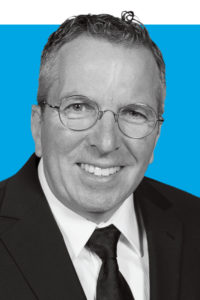
Connecting with members from Ontario to Newfoundland is no easy task. With such a large territory to serve, the PCMA Canada East Chapter regularly ran into a familiar challenge for event professionals: budget restrictions. “Our main member areas are Montreal, Toronto, and Ottawa,” said François Brunet, president of D.E. Systems Ltd. “Trying to schedule speakers in those hubs had become a logistical challenge over the past few years, and paying travel costs to present the same workshop in two destinations didn’t make sense.”
When Brunet assumed the role of chapter president in 2017, he helped pioneer LIVE-ED, a series of four live-streamed workshops designed to educate members across the country and help determine the best digital solution for the chapter’s member-engagement strategy. Some of the workshops leveraged webcasting services such as SlideLive and Chorus Call, which include the ability to charge a fee and require registration in advance. “Chorus Call and SlideLive are both very valuable tools for closed conferences,” Brunet said, “but we found that, for our purpose, Facebook Live was the best tool. It delivered the biggest reach.”
Brunet said that the LIVE-ED workshop on Facebook managed to attract about 50 viewers during the program, but the real impact of the biggest name in social media came into play after the presentation was over. One of the programs, “Budget Cuts and Doing More with Less,” collected more than 1,200 minutes’ worth of viewing time. “When it’s on Facebook, it gets continued shares and continued views,” Brunet said. “If you’re trying to reach more prospective members, you get a lot more exposure.”
Brunet acknowledged that the average online user doesn’t want to deal with the hassle of entering credit-card information or personal details for a short workshop. “If you have three days of programming with high-quality production, people might be more willing to register and pay, but getting them to register for a webcast is difficult,” Brunet said. “People are accustomed to getting so much content now that they expect it to be free.”
In 2018, more event professionals will be able to view Canada East’s content at no charge. Brunet said that the chapter will continue to grow LIVE-ED, with five workshops already scheduled. There are also plans to appear on more social-media networks. Brunet said the chapter is aiming to use a company called LiveScale, which allows broadcasters to stream high-quality video across all of its social-media accounts simultaneously. “If you’re doing a webcast with an outsourced partner, the labor costs are still very expensive — even for a small workshop,” Brunet said. “LiveScale lets us use our own cameras to avoid those additional expenses. So we can do it on our own and deliver education on more channels to reach more viewers.”
The first installment for Canada East’s 2018 LIVE-ED series, “Dream Big to Transform the Image of a City: 17 Lessons From Ottawa 2017,” will be broadcast on Wednesday, Feb. 21. Visit canadaeast.pcma.org for more details on the exact timing, or just watch your social-media feeds.
For information about Digital Event Strategist (DES) certification, educational opportunities, resources, and more, visit PCMA’s Digital Experience Institute at digitalexperienceinstitute.org.